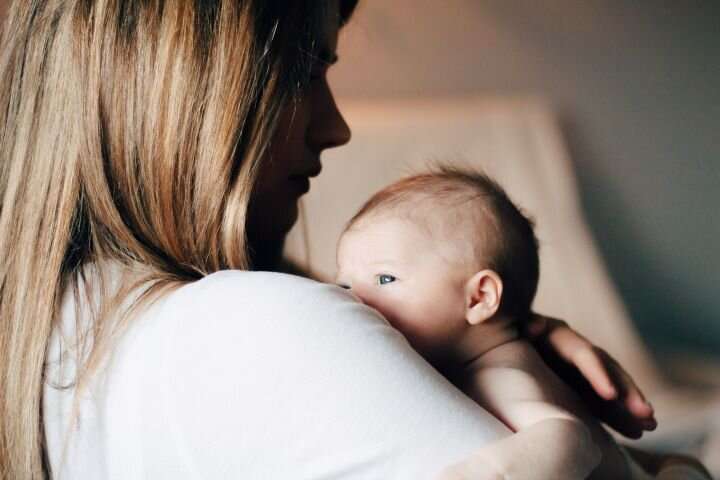This article has been reviewed according to Science X's editorial process and policies. Editors have highlighted the following attributes while ensuring the content's credibility:
fact-checked
trusted source
proofread
Analyzing the impact of disadvantage on mothers and babies

A first in Australia, the La Trobe University study, published in BJOG: An International Journal of Obstetrics & Gynaecology, analyzed 18 years of perinatal data, representing almost 1.2 million births across Victoria, and found a stark correlation between disadvantage and adverse outcomes for both women and their babies.
Lead researcher, Fiona Faulks from La Trobe University's Rural Health School, said women from disadvantaged areas were disproportionally likely to experience negative birth outcomes.
"We know from 18 years of data that where a woman lives can have a major impact on whether she and her baby experience poor birth outcomes or not—and it shouldn't be this way," Fiona Faulks said.
"Those living in low socio-economic areas—including those in rural and regional areas—consistently experience worse outcomes than women living in more advantaged circumstances, and the consequences for these women and babies can be significant."
Fiona Faulks said that the research highlighted just how important access to good maternity care is to the health of both women and babies, and how well-designed services could reduce the impacts of social disadvantage.
"When a woman has access to maternity care in their own community, and continuity of care with a trusted midwife, she is much more likely to access care, maintain contact with care providers and disclose any sensitive information that could affect her health or that of her baby—and midwives have the opportunity to really engage with the women they're supporting," Fiona Faulks said.
"The results are concerning, but this research really shines a light on why we need to better support women experiencing disadvantage, and those in rural and regional Australia, because the cost of not doing so is far too high."
Midwife Rachel James said the study confirmed what many in the profession had encountered when caring for women.
"We see a lot of women who live in disadvantaged circumstances, and we know how much harder it is for them to access the services they need. Some of the barriers that exist for vulnerable women are transport, time away from their jobs, caring responsibilities for their other children when they are isolated and the cost of accessing care in smaller communities," Rachel James said.
"As midwives, we want to spend more time with vulnerable women, understanding their particular challenges, and support them to have a more positive and healthy pregnancy, birth and postnatal experience– continuity of care is one thing that can make a huge difference."
The study also found that a persistent, widening gap existed between the most and least disadvantaged groups for maternal admission to ICU and post-partum hemorrhage, and cesarean section rates have consistently increased over time.
More about the study:
- The study examined 18 years of routinely collected perinatal admissions data.
- The data represented 1,188,872 singleton births in Victoria between January 1999 and December 2016.
- Adverse outcomes experienced disproportionally by disadvantaged women included: admission to Intensive Care Unit (ICU), postpartum hemorrhage (PPH) and cesarean section, preterm birth, low birthweight, admission to special care nursery/neonatal intensive care unit (SCN/NICU) and stillbirth or neonatal death.
- Social determinants of health that contribute to poorer maternal and neonatal outcomes include being single, living in a low socioeconomic area, young maternal age, obesity, smoking and rurality or remoteness.
- Women living in low Socio-Economic Indexes for Areas (SEIFA) locations had worse outcomes.
More information: Fiona Faulks et al, Perinatal outcomes of socially disadvantaged women in Australia: A population‐based retrospective cohort study, BJOG: An International Journal of Obstetrics & Gynaecology (2023). DOI: 10.1111/1471-0528.17501





















